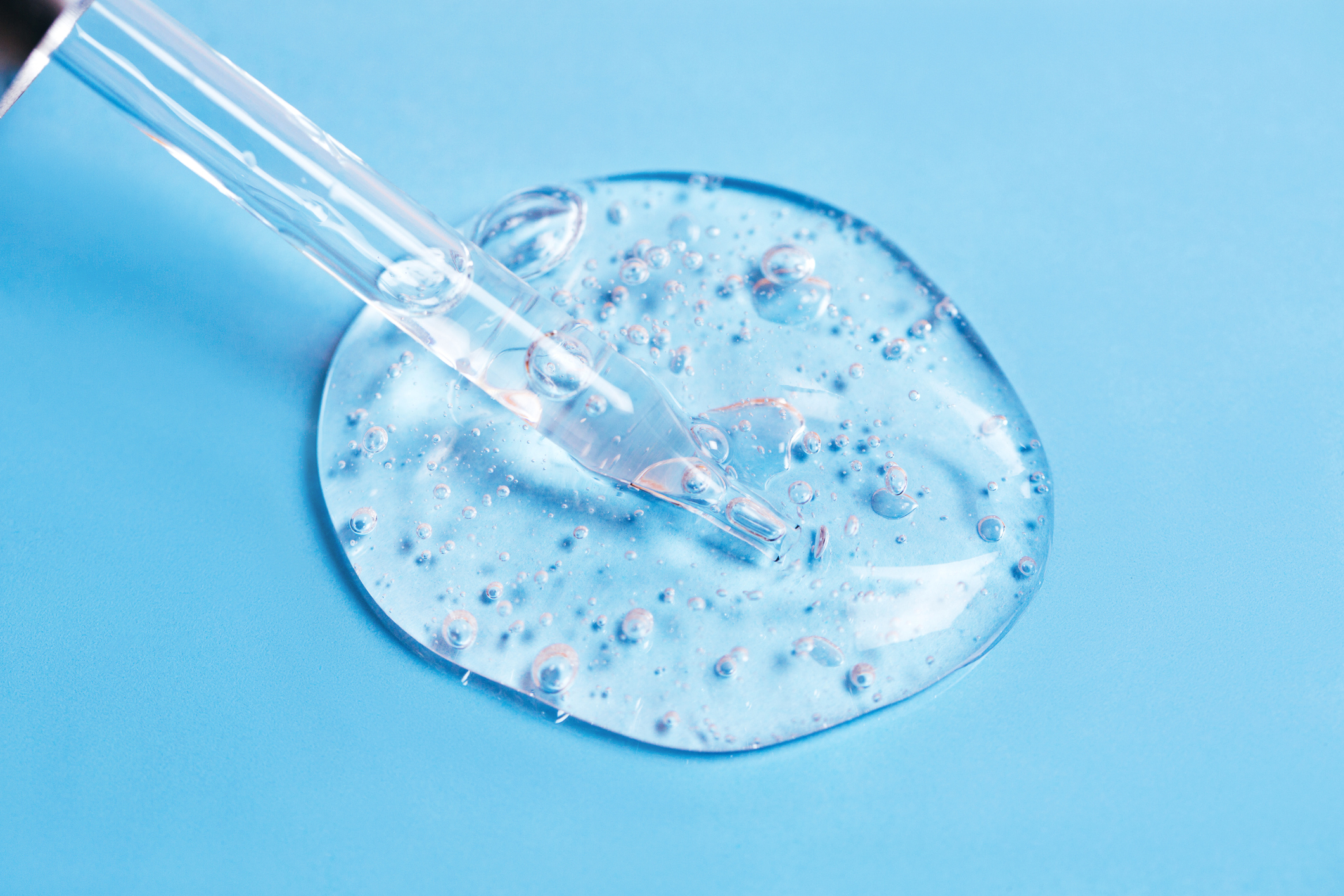Hyaluronic acid: benefits, what it does, how to use, side effects
Everything you need to know about hyaluronic acid benefits and side effects

One of the buzziest products to hit the beauty scene in recent years is hyaluronic acid. Benefits of the hydrating molecule have been praised by influencers, celebrities, and beauty gurus alike. It’s widely touted as one of the best moisturizers for dry skin, and boasts incredible plumping and anti-aging effects, too. The stuff is seemingly everywhere, from serums and creams to face masks and even injectable fillers—it was one of the most popular skincare ingredients of 2020, after all.
But does the miracle ingredient really live up to the hype? The answer is a resounding yes! Everyone can benefit from adding it to their skincare regime. So whether you've been wondering about the effects of hyaluronic acid vs retinol for a while or asking is too much hyaluronic acid bad for your skin, this primer will let you in on everything you need to know about hyaluronic acid benefits and side effects.
What is Hyaluronic Acid?
Hyaluronic acid is a gel-like molecule that’s naturally produced by your body, with most of it found in your skin, joints, and eyes. Around half your body’s hyaluronic acid is in your skin, where it holds water to keep it looking smooth, full and supple.
But as we age, our bodies begin to produce less hyaluronic acid. Being exposed to environmental factors such as pollution, UV rays from the sun and tobacco smoke can also cause levels to drop. That drop can result in skin sensitivity and dullness, fine lines and wrinkles, uneven tone and texture. Hyaluronic acid serves as a sponge to help your skin retain water and provide lasting hydration.
- What is succinic acid and how does it benefit skin?

What are Hyaluronic Acid benefits?
Adding hyaluronic acid to your skincare routine has many benefits. One of the best things about it is that it works wonders for people of all ages and all skin types. Don't let the word “acid” fool you—hyaluronic acid is extremely gentle and lightweight, making it suitable for those with sensitive, dry skin and oily complexions alike. It’s also great for those with acne-prone skin, as it helps to calm and protect skin with its antioxidant qualities.
Hyaluronic acid has powerful hydration capabilities. Within your skin's cells, it can store more than 1,000 times its weight in water—it's like giving your skin a nice healthy gulp of water! The more hydrated your skin is, the more radiant, plump, soft, and glowy it looks.
It also works wonders for anti-aging. As we mentioned, your body produces less hyaluronic acid as you get older. So adding it to your anti-aging skincare routine will help to give you a youthful glow, as it smooths fine lines and wrinkles, improves elasticity, tightens skin and reduces age spots and pigmentation. Hyaluronic acid is also used by dermatologists as an injected filler. The gel instantly restores lost volume, decreases wrinkles, and slowly dissolves over the course of a year.
While it’s mainly known for its incredible effect on your skin, recent research has shown that hyaluronic acid benefits go deeper. The ingredient has also been found to speed up wound healing, soothe joint pain, relieve acid reflux symptoms, reduce dry eye, and preserve bone strength.
The good news is that because hyaluronic acid is naturally occurring in your body, there are very few side effects associated with it, and allergic reactions are rare. Side effects could be caused by other ingredients in a product or how often you’re using them. If you have an adverse reaction, contact your doctor or dermatologist for advice.
- A beginner’s guide on how to start using retinol

How Do I Use Hyaluronic Acid?
Hyaluronic acid can be found in serums, creams, sheet masks, and supplements. It can be intimidating to add a new product to your routine, but hyaluronic acid is surprisingly simple to use. There are just a few things you need to keep in mind. If you're using a serum, always apply it to damp skin. Hyaluronic acid is like a moisture magnet, so the more moisture you give it, the better it will perform. Applying it to dry skin could actually give you the opposite effect, leaving your skin more dehydrated than it was before.
After cleansing your face, and while it's still damp, gently press a few drops of the serum into your skin using the palms of your hands. Then, immediately apply a hydrating moisturizer on top. This is important to seal in all that moisture and give the hyaluronic acid something to absorb if you live in a dry environment. It's recommended that you use it twice a day, in the morning and at night.
No matter which formula you use, just be sure it’s the last step in your routine. Using too many products with hyaluronic acid can cause redness and irritation, so there's no need to use more than one product. It can safely be used with retinol, vitamins, and peels, just avoid pairing it with acids that have low pH levels, such as glycolic acid. These could inhibit the hyaluronic acid, making it less effective.
Adding hyaluronic acid to your skincare routine is a no-brainer. It is easy and safe to use, is found in a huge assortment of products, and will give you a dewy, rejuvenated look, whatever your age or skin type.
The My Imperfect Life team is all about helping you navigate your world. We bring you the latest on fashion, beauty, travel and wellness so you can live life on your terms.